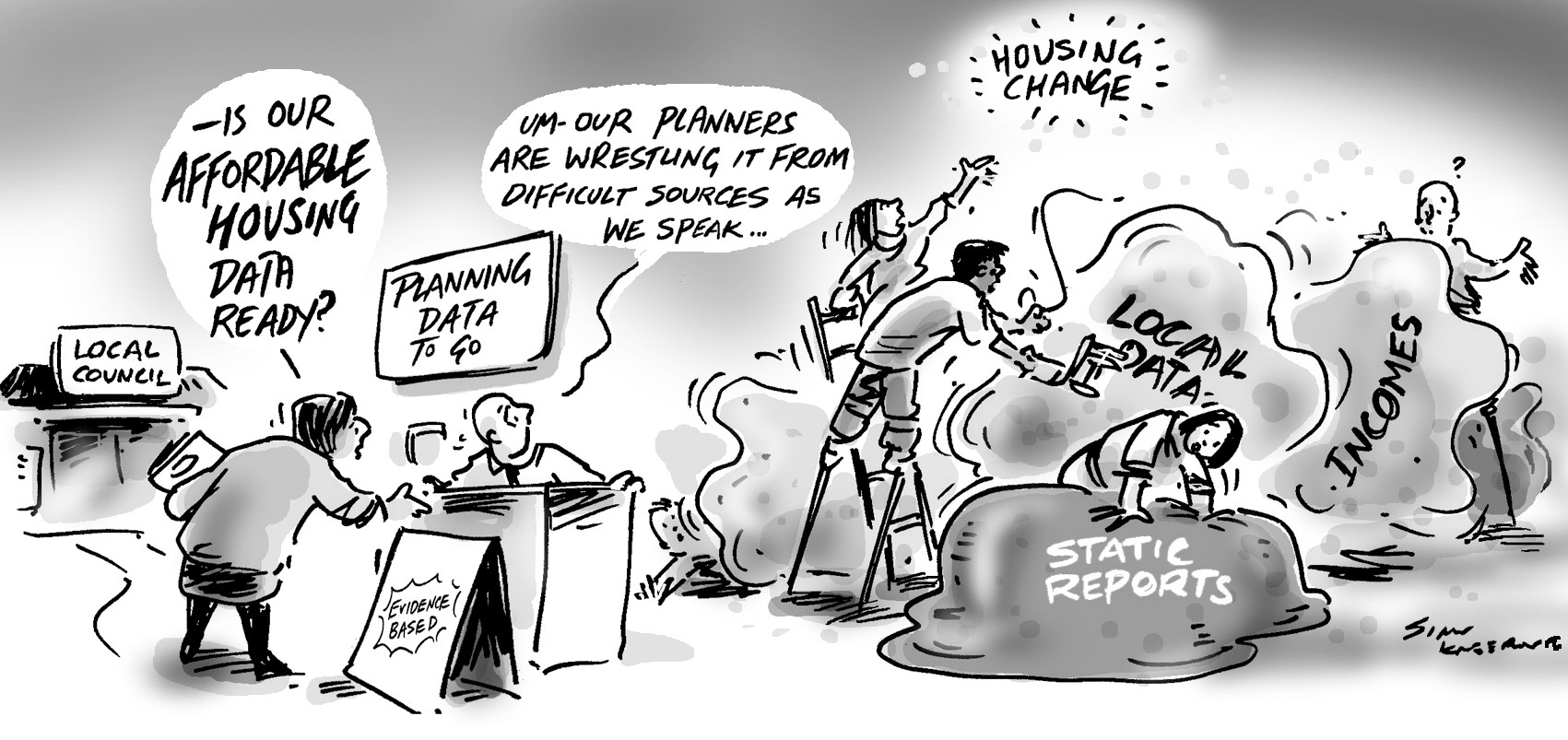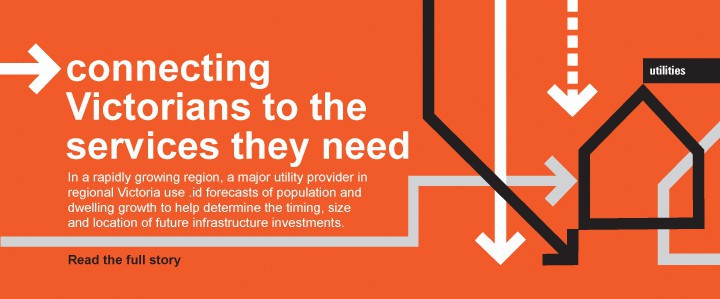Population growth in regional New South Wales has been sluggish over recent years, however, some regional fronts still show strong growth, particularly around fringe and coastal areas around Greater Sydney. In this blog, we use our latest NSW Small Area Forecast information to examine some of the factors driving population growth in regional NSW to see where growth is likely to occur in the future.
This is the second article in our series of blogs Forecasting the future of NSW, which look at population trends in New South Wales – Read the first blog in the series: Where will population growth be located?
Population growth in regional areas tends to reflect a range of factors, including:
- Local employment prospects
- Attractiveness of the area to retirees and lifestylers
- A pre-existing growth cycle
- Investment in services and infrastructure (both public and private)
- Proximity to Sydney
- Availability of greenfield land.
We divide this blog into three sections, which focus on key parts of regional NSW:
- Fringe areas near Greater Sydney
- Coastal areas
- Inland areas.
Strong growth in fringe areas surrounding Greater Sydney
While population growth in regional NSW has slowed in recent years, some areas have tended to remain more stable in growth, notably areas on the fringe of Greater Sydney. Areas such as those around Newcastle and Wollongong have tended to maintain higher growth rates. Proximity to Sydney and the potential for further ‘over-spill’ means that substantial growth is also expected in the Lower Hunter and Illawarra.
The Hunter Region boasts the largest economic base in NSW outside of Sydney. The area is diverse, with substantial primary industries, notably in coal mining, equine breeding and winemaking. The area has a solid manufacturing base, with steel and aluminium production and engineering for the mining industry. The area is the major electricity producing region for NSW and is a transport hub, with a huge port especially for coal exports. The services sector, which boasts the majority of employment growth, has significant employment in health and education, notably the tertiary education sector. The Williamtown Air Base is also a major employer.
Forecast Population growth, Selected Hunter and Greater Illawarra LGAs, 1991-2041

Source: .id, .id Small Area Forecast information (SAFi), 2016; ABS, Regional Population Growth
All areas are anticipating growth in the Hunter Region. Newcastle / Port Stephens and Lake Macquarie continue to grow, based on a combination of greenfield and higher density development. Key greenfield areas where population is forecast to increase include Cameron Park, Fletcher, Wallsend / Elermore Vale, Minmi, Cooranbong, Morrisset, the Murrays Beach / Pinny Beach area, Fern Bay and Medowie.
Central Newcastle and areas along the Maitland Road corridor are likely to have greater densities in the future, with a large number of identified high and medium density sites. Maitland is currently growing at an especially fast rate. It has significant greenfield developments under construction or earmarked in Aberglasslyn, Raworth / Morpeth, Gillieston Heights, Lochinvar, Thornton, Farley and Chisholm. Although there still significant development opportunities in Lake Macquarie and Newcastle / Port Stephens, Maitland is expected to grow strongly as the developments are affordable and still have good access to employment in the Lower Hunter.
The Illawarra region also has a strong industrial base, though it is smaller and less diverse than the Hunter Region. The City is currently undergoing port expansion at Outer Harbour. This will likely drive employment growth in transport services, with the prospect of a new container port for the state. The primacy of the Wollongong CBD area also provides a strong investment focus for health, education and retail employment. In terms of population growth, Wollongong does benefit from its proximity to southern Sydney and a dearth of greenfield land in the St George and Sutherland areas. However, the location of greenfield supply in Wollongong and Shellharbour tends to be south and west of the City, making commuting to Sydney harder and further.
The key residential growth areas for the Wollongong region include the West Dapto Release area (Horsley, Kembla Grange, Cleveland, Huntley, Wongawilli), as well as apartment construction in central Wollongong. The Shellharbour area has large identified greenfield development areas in Calderwood, North Macquarie and Shell Cove.
Growth in the Shoalhaven / Kiama area will be facilitated by growth in Wollongong employment, as well as further service growth in and around Nowra and Kiama. Population growth in the region has traditionally been boosted by retirement migration from Sydney, Wollongong and to a lesser degree Canberra. These regions have experienced lower growth in recent years, although the attraction of a coastal or rural lifestyle within the proximity of larger employment centres remains attractive for families.
Growth around coastal areas: Strong but patchy
The rate of population growth in NSW coastal areas has decreased from historic highs during the 1980s and 1990s. The pattern of population growth along the coast remains a patchwork, with some areas quite stagnant over the last five years, some areas increasing their growth again over recent years, and others with the potential to grow more significantly in the future. The chart below shows the forecast population growth in a range of areas along the coastal strip.
Forecast Population growth, Selected Coastal LGAs, 1991-2041

Source: .id, .id Small Area Forecast information (SAFi), 2016; ABS, Regional Population Growth
Population growth in Tweed Shire is driven by new residential development in two key areas: Cobaki and Kings Forest, with the potential for almost 10,000 new dwellings in these areas. A key ingredient for more growth in Tweed is the ability to gain more of the greater Gold Coast market which has favoured the Queensland side of the border over the last decade.
Other parts of the North Coast are also expected to show solid population growth, although some areas, notably Byron Shire have medium to longer-term supply issues. A key issue is a scarcity of land of coastal and near-coastal areas, with a higher share of development assumed for inland areas, where demand is likely to be less pronounced.
Population growth is expected to return in the Mid North Coast over the next ten to twenty years, with an assumed increase in outwards migration from Sydney. Port Macquarie-Hastings has already demonstrated gains in dwelling construction activity in the past few years and other Councils such as Coffs Harbour are forecast to follow a similar pattern. Growth in Mid Coast Council is associated with development in the coastal strip in places such as Forster-Tuncurry, Harrington and Old Bar, with the potential for greater rates of growth with the development of Brimbin township.
The population growth outlook for the South Coast is more modest, with comparatively low increases in population in Eurobodalla Shire compared to previous decades. Similarly, Bega Valley is also expected to have only moderate rates of growth. The attractiveness of these areas as retirement destinations has seemingly fallen in the last decade, a situation that has not been aided by a lack of prime coastal land for residential development.
Inland population growth: Slow but steady
The rates of population growth in inland centres in NSW has increased notably in the last ten years, with solid growth in centres, such as Tamworth, Lismore, Orange, Bathurst, Wagga Wagga, Goulburn and Albury. Growth has been driven by employment opportunities in service industries, notably education and health, which in turn has attracted migrants, especially from Sydney. The chart below shows the forecast population growth in a range of inland regional centres.
Forecast Population growth, Selected Inland Regional Centre LGAs, 1991-2041

Source: .id, .id Small Area Forecast information (SAFi), 2016; ABS, Regional Population Growth
Centres such as Tamworth, Dubbo, Albury, Wagga Wagga and Bathurst have benefitted from a more centralised approach to service delivery, as well as reaching a critical mass in population. This means these centres are obvious points for investment and job creation in education, health, retail, business and government services and provide a clear option for any value-add manufacturing processes occurring in the region’s economy.
Many of these cities suffered severely during the drought of the early 2000s and the ability for these centres to remain recession-proof is to deny the strong relationship they retain with their rural hinterlands. Nonetheless, a greater share of the population in these inland centres is employed in services and most of these cities have a positive growth cycle which aids their future outlook.
Some inland cities, notably Orange, have major challenges ahead, with the closure (or in other cases the threat of closure) of major industries. The recent closure of the Electrolux factory in Orange will certainly hinder growth, but the interconnectedness and availability of other employment in the Central West will help the region retain a positive outlook. There is strong value-adding to primary production in the region and its proximity to Sydney is good for investment and employment growth, acting as an attractive option for ‘overspill’ migration from greater Sydney.
Population growth in Queanbeyan / Palerang is heavily connected to growth in Canberra. While employment prospects in the Commonwealth Government vary with changes in Government, the ACT has developed strong tertiary education and services sectors. The majority of the growth in Queanbeyan is expected in the Googong and Tralee release areas. Ongoing increases to density around the CBD and growth in places such as Bungendore will help to supplement the main growth areas.












